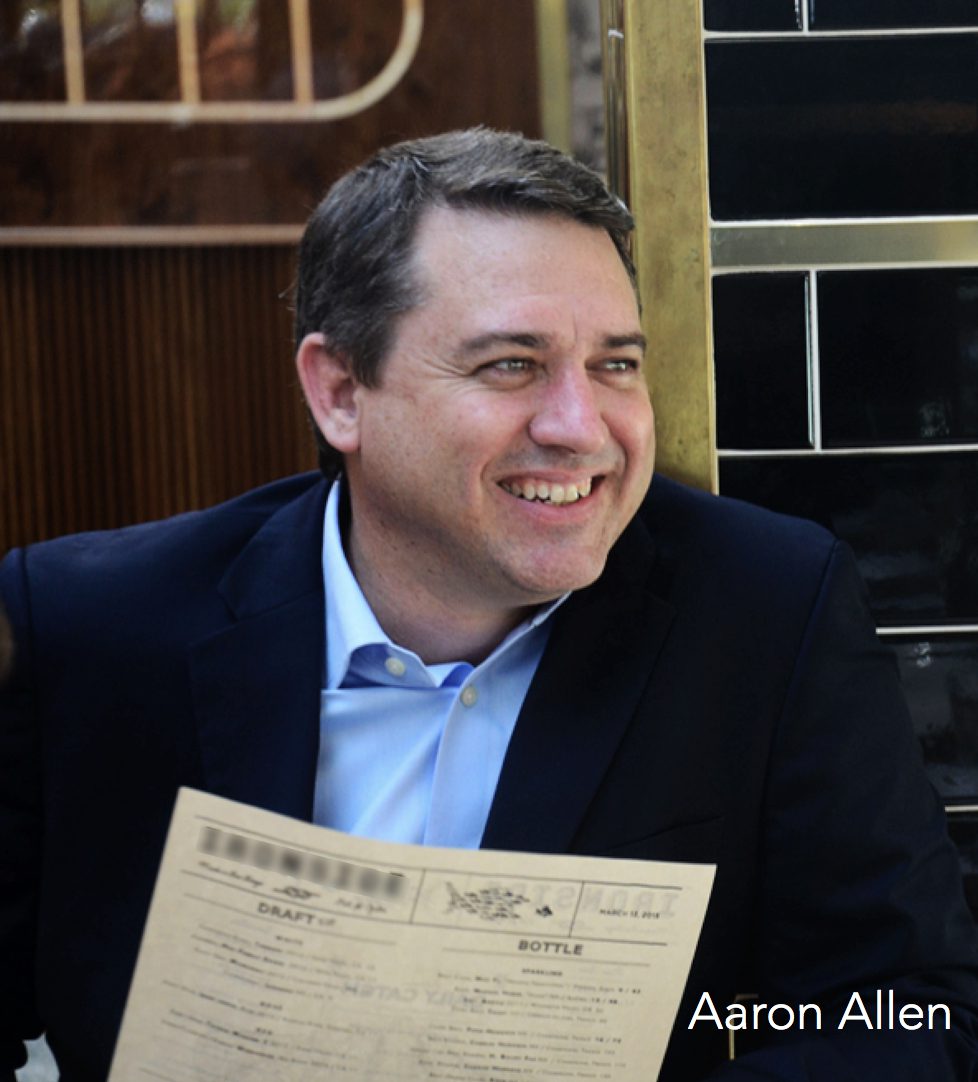
Restaurant P&L: It’s Time to Improve Your Margins
- By Aaron Allen
Every restaurant bleeds — it’s simply a question of where and how much
Just as banks and governments occasionally conduct stress tests to model scenarios and validate the stability of their systems under pressure, restaurant chains (and their investors) should endeavor to objectively pressure test their P&L — with increasing rigor and frequency.
By performing a gap analysis and applying industrial engineering practices across functional areas, it’s possible to uncover areas of opportunity and quantify where value is trapped or hidden in a business. We look at major cost drivers (historically, current-state, and future-state) to determine how those can be made more efficient. While the aim is to improve profitability and ensure a business is as productive as possible, it’s also about being confident in the blend of what the concept, brand, and consumer needs.
In Other Words: Be Your Own Activist Before Someone Else Is
Many chains have already done their level best in managing the business through challenges and pressures on their P&L (and their private equity investors have already harvested the low-hanging fruit identified in pre-investment due diligence).
But once the obvious cost-cutting and trimming of the fat has been rendered, the margin yield is often still not enough to prop-up same-store sales declines (in fact, in many cases, the well-intentioned efforts have compromised the experience for customers and crews in a way that feels akin to chipping bone; and comparable sales declines are trending downward on a much steeper slope than traffic counts are climbing).
We recommend a holistic approach be applied to looking at the organization, working across functional areas and down individual line items of the restaurant P&L while reviewing factors impacting performance both inside and outside the business.
Restaurant Cost Cutting is Easy (But Do you Want to Build Traffic with Discounts?)
Cost-cutting is easy. Cost optimization is something altogether different, and it is a lot more challenging to get right.
There are always obvious ways to cut costs, but what’s more often the case (than implementing systems and process optimization as a means to gain improvements to productivity and profits) can be likened to archaic battlefield wound care — amputations with blunt tools and unsanitary conditions that, should the patient survive the expected infections and unnecessary pain and further risk to self, must then also go on with permanent scars and disfigurements, both mental and physical.
When a product is discounted on a percentage basis, a message is broadcast to all communicating a sentiment of desolation. If the signals are surprising and shameful enough for a brand to attract the attention of those looking for such things, you can be sure it is a beacon and distress call also heard by the wider public (the affluent and affluent-minded, investors, media, etc.).
We recommend against chumming the waters with your brand — especially when there are so many other better ways to attract positive attention and traffic with strategies more sustainable than competitive price wars.
Your Prize: How to Size and Prioritize Restaurant P&L Opportunities
A holistic approach is essential for foodservice industry businesses. Supply chain, purchasing, marketing, operations, finance, training, IT — all of these functional areas have to work together. Targeting line-items to reduce costs may limit the potential gains if pursued entirely in isolation.
Here are some ways we recommend prioritizing optimization initiatives:
- Learn Triage Techniques
Context and contrast can help distinguish between mountains and molehills. If a patient has a bullet would and a splinter, we know what to address first. Apply the same logic to your restaurant P&L.
- Pick the Right Wars
Most management efforts and resources are expended fighting fires (because it seems less costly than what is required to invest in fire prevention and faster suppression systems). Be your own insurer and plan ahead.
- Play the Long Game
We encourage our clients to think and plan on parallel paths: short-term wins are necessary to gain momentum and fund longer-term initiatives, but lasting organizations that transform the industry look past the next earnings call to three-, five-, and ten-year horizons — and beyond.
- Know Not Every Wound Requires Amputation
And not every headache necessitates a lobotomy. Some symptoms do not only require an OTC medication but if symptoms are chronic and pervasive they justify professional attention and care. If certain areas keep coming up (as a pain-point in the P&L) and aren’t being solved by a standard Google search, it probably deserves a trip to the doctor for a second opinion.
- Think Set of Scalpels, Not Single Saw
The best surgeons of yesterday used hacksaws. Today, they use laser-cut scalpels. Tomorrow, they’ll use robotically controlled lasers over 5G networks. Similarly, the cost-cutting approaches many operators use today is on par with sawing off limbs with a hacksaw, even though the tools available to them currently are much more precise (and the capabilities of non-invasive precision are improving by the day).
- Measure Twice, Cut Once
A great rule for carpenters, of course, but the same thought process can and should be applied to the restaurant P&L. Find the happy medium between haphazard (potentially uninformed) decision making and analysis-paralysis to gain traction and make meaningful progress while making confident and sure-footed decisions.
- Implement Imagination Over Iteration
Incrementalism can easily lead corporate planning astray. The notion of ‘realistic’, consistent, inflation-adjusted results can create an illusion of safety from unexpected challenges and challengers. In scenario modeling, it’s best to think through the best and worst scenarios before landing on a target case.
Fewer executives feel they have the time or luxury of spending time ‘imagining’ (some may call this consternation), but we’re convinced there absolutely has to be someone — a person, function, or budget allocation — set aside for imagining the future and the role (opportunities and risks) of your company in that new future.
Systematically relaying back company telemetry and trajectory for corporate captains to consider to chart their course with the most and best options still within the capabilities of their ship, versus windows of opportunity missed by putting off to tomorrow that which should command at least a fraction more mindshare today.
- Conquer Cognitive Bias
While habit is a virtue in keeping healthy, it’s a steep ditch on a sharp-curve road for corporate strategy; vigilance, stamina, objectivity, and challenging the status quo are more virtuous attributes in shaping, and rhythmically reimagining, the future and vision for your company.
- Overcome Organizational and Industry Inertia
Just as radar technology has improved dramatically for the weather industry, the same advancements can be made to corporate preparedness. The best and most successful companies (across sectors) worldwide are making investments into CAPEX, R&D, intelligence, and their own organizations with a determination to win that can easily demoralize anyone half-heartedly standing up against it.
- Hire Challengers to Help You Defeat Competitors
While nobody can make foolproof forecasts (if we could, wouldn’t we all be at the horse track or sitting on lottery winnings elsewhere?), prudent and diligent monitoring of the industry and really studying the dynamics driving it — and what those drivers will be in the future — can advance organizations.
- Enlist Scientists and Storytellers
It can be exponentially beneficial to have an objective and outside view to help imagine and craft a new, more compelling future for your company that can inspire others essential to helping you pull your current-state conditions and future-state ambitions into closer proximity.
Objectivity Looks Past Organizational Limitations
Hiring in a top-tier consultancy can be expensive, so it often requires authorizations and endorsement of the CEO. This elevates expectations and commitment levels of all stakeholders involved and also ensures there is sufficient buy-in, collaboration, and availability of requisite resources to produce the best possible outcomes.
Approaching the business as if it were for sale (thinking “if we were being looked at by an investor, what would they find — both good and bad?”) can enable a broader perspective and help identify areas of opportunity through enhanced capabilities and resources.
About Aaron Allen & Associates
Aaron Allen & Associates works alongside senior executives of the world’s leading foodservice and hospitality companies to help them solve their most complex challenges and achieve their most ambitious aims. We have helped evaluate and engineer menus for some of the world’s largest restaurant brands, as well as helped restaurant companies around the world drive revenues, increase profits, and enhance the guest experience through improved marketing, messaging, and menu engineering.
Our clients span six continents and 100+ countries, collectively posting more than $300b in revenue. Across 2,000+ engagements, we’ve worked in nearly every geography, category, cuisine, segment, operating model, ownership type, and phase of the business life cycle.
To read more great articles you can use, visit www.trnusa.com/blog





Recent Comments